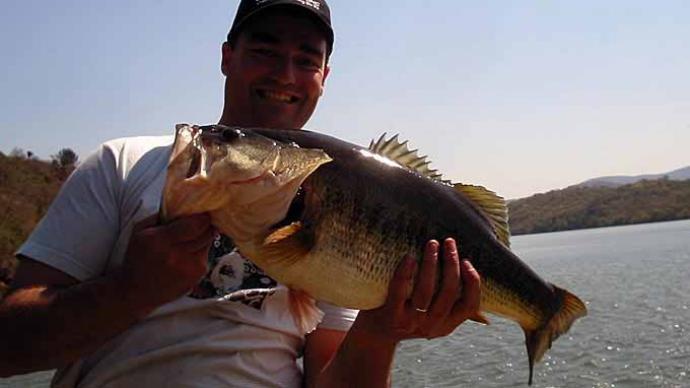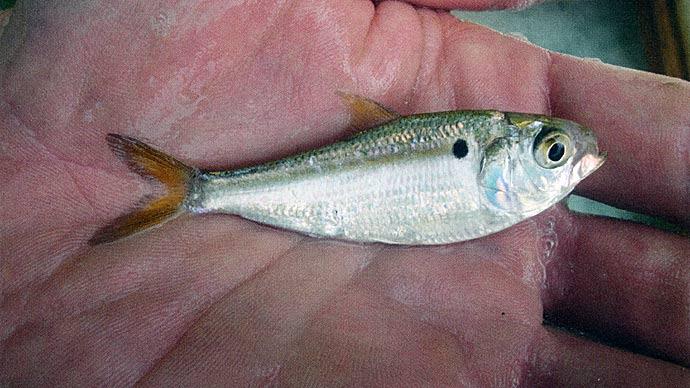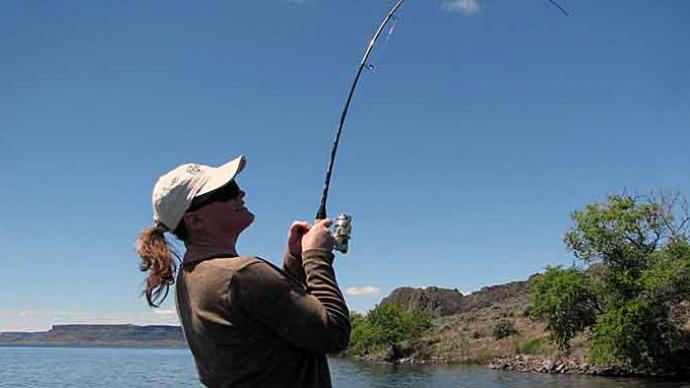
Bass anglers, in general, disdain using live bait for bass fishing. There are exceptions. There is a following of bass anglers in the Midwest who advocate using live bait for bass fishing and in upstate New York. California anglers have long known that some of the biggest bass in the reservoirs of the West are caught on live crayfish and illegally on rainbow trout. But nowhere in the world is live bait fishing for bass as socially accepted or as productive as it is in Florida.
“Using live shiners in Florida increases your chances of landing a trophy bass exponentially!” exclaimed transplanted Floridian Joe Balog. Balog said he learned long ago as a kid on vacations to Florida that if you were serious about catching colossal bass, shiners were the way to go. “Your chances of catching the bucketmouth of a lifetime go up astronomically when using live shiners versus lures,” he said.
Balog’s personal experience backs up his statement. Balog caught his personal best largemouth just a few months ago, punching some dense vegetation. The beast pulled the scale down to almost 11-1/2 pounds. However, the following nine of his ten personal best bass have come on shiners. There is no better technique, at least in Florida, for putting big bass on the deck.
Getting serious about catching trophy bass on shiners is a whole new ballgame. Anglers that love to run-and-gun will find shiner fishing boring. Balog said he had sat on a spot where he knew there was an exceptional bass and waited for hours before the bass decided to eat. Patience and perseverance are two traits a shiner fisherman serious about catching the bass of a lifetime must possess.
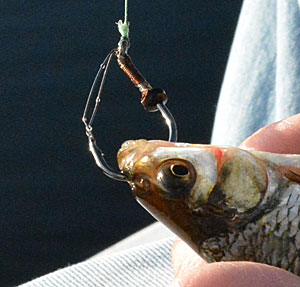
The other is good bait. Wild shiners are readily available at most tackle shops in Florida. Bait shops get a reputation for having excellent or bad bait, so they try to have the liveliest shiners possible, but that depends on the time of year and their supplier. Balog said that guides want you to catch fish, so they are generally going to mix bait sizes and use some smaller 3- to 5-inch shiners to ensure that you get lots of action, but if you're serious about targeting trophy bass, the only way to go is to catch your own. Shiners big enough to interest mega bass are going to be 8 to 13 inches and weigh ¾ to 1 pound. The more lively and aggressive they are, the better. Winter is the most challenging time to find good shiners.
Of course, fishing a bait the size of good crappie requires some specialized tackle. “Any 7-1/2 to 8-foot heavy-action casting rod will work,” said Balog. “You need a big, heavy rod because you’ll be fishing heavy cover with strong line and dealing with powerful fish. The only other way to even think about fishing the places you’re going to be targeting when shiner fishing is by punching and flipping. Even then, you’ll not be able to cover it as thoroughly.”
Balog said there are three ways to fish shiners- trolling, under a float, or free lining. Trolling is suited to rivers and other waters that are more open and feature vegetated edges and undercut banks.
Floats work best for shiners when targeting bulrushes and lily pads, like on Lake Okeechobee, where a shiner is free to pull the float through the vegetation. “I don’t float fish much except in low light situations when the fish are more inclined to move out to the edges,” offered Balog. Free lining excels when plying thick cover, tussocks and mats where the shiner is allowed to freely swim back under the nasty stuff where the giants reside.
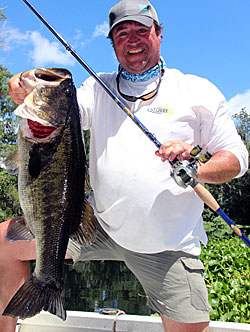
“You’re going to want to use monofilament when trolling with shiners,” advised Balog. “Mono will outfish braid five to one when trolling. I think bass can see braid easier, and I’ve seen repeatedly when mono will get more bites than with braid.” Balog said he uses 25-pound, green Sufix monofilament for trolling. Balog related a time when he had shiner fishing with his admittedly stubborn Dad and Uncle. His Uncle was using a rod with mono, and his Dad had a rod rigged with braid. His Uncle was out-fishing his Dad badly, but his Dad refused to change outfits until his Uncle had him down 12 to zero. Their lines were no more than six feet apart using the same shiners, so the braid had to be the difference.
When free lining, Balog resorts to 50 or 65-pound 832 Sufix green braid for fishing near heavy cover. “The braid is better for cutting through the grass, pulling out snags, and tangling with big fish. Line weight affects shiner movement. I generally use 50 pounds, but sometimes I resort to 65 pounds. The one thing you don’t want to do is restrict the shiner movement.”
Strong line and heavy rods demand strong hooks. “When dealing with big fish and heavy cover, traditional hooks will fail. That’s why when shiner fishing, I use hooks made by a guy by the name of Porter Hall (hallhooks.com.) These are custom-made, heavy-gauge wire, size 6/0 to 8/0, octopus hooks with a stiff weed guard.” Even with the best of tackle, Balog said the best shiner fisherman is only going to hook 75% of the bass that bite, and the average angler might only connect with 5%0 of the fish or less. With such oversized baits, hook-up percentages can be low. Add the element of heavy, impenetrable cover, and the odds are often stacked in the bass’s favor.
Balog said the best shiner fishing typically occurs at midday when bass retreat into cover and light conditions provide optimum visibility. This is where the patience comes in. “I’ve watched bass eat shiners, and there are times when they will sit mesmerized for 20 or 30 minutes looking at the shiner. I’ve seen bass chase a shiner up into some vegetation and then sit there waiting for it to come out,” said Balog. “When that happens, they don‘t want anything else. They are fixated. It’s common to pull up on a spot and fish for two or three hours before catching a big fish. I think part of it is the fishing pressure these fish experience and how cautious they are. Shiners, though, just seem to level the playing field.”
If catching the bass of a lifetime is on your bucket list, give shiners a try.


